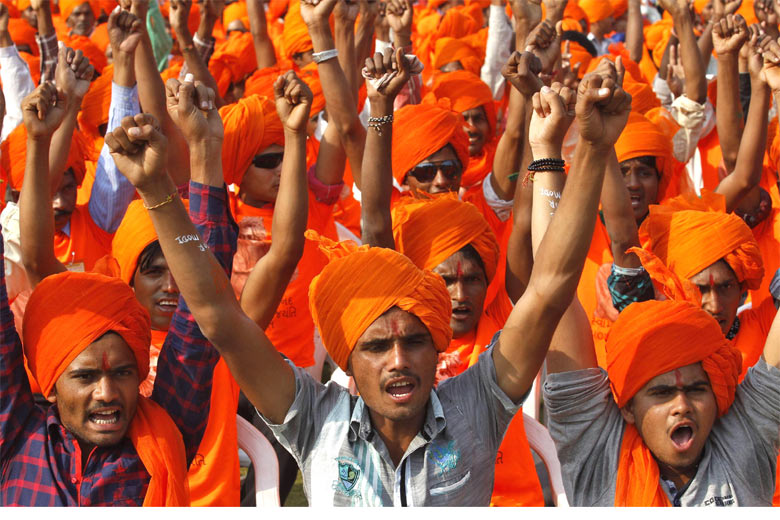The Wire: By Not Recognising Hindutva Majoritarianism as a Security Threat, What Are We Protecting?
The silence of security experts implies that extremist Hindu organisations are not considered as legitimate threats either to the nation or the state. Thus, we are implicated in furthering the majoritarian narrative.
On August 8, a mob gathered right in the middle of the nation’s capital, shouting the slogan ‘when Muslims will be chopped, they will shout the name of Lord Ram’. The slogan and the act would have been shocking, but for the fact that their desired outcome had already been orchestrated on the streets of Delhi in February 2020.
One would imagine that such a threat to the lives of Indian citizens, and that too in the capital, would attract the attention of India’s security community and strategic experts. However, there was barely a whimper.
A common sense definition of a security threat would be something or someone that has the potential to cause physical harm or produce a sense of insecurity. Going solely by this definition, one can potentially imagine a plethora of security threats – global warming, rapacious corporations, natural disasters, repressive governments, enemy states, and lastly, extremist organisations, both international and domestic.
However, for most within the security community, it is only the last two that are taken seriously as security threats. Moreover, in terms of domestic extremism, there is a tendency to focus on particular groups – Islamists, Maoists, and ethno-nationalist separatist groups. The thread that runs common across these groups is that they represent cultural minorities and/or peripheral ideologies.
In contrast, the threat from majoritarian extremism, namely Hindutva, is rarely acknowledged. This silence is a result of many things – implicit beliefs, denial, disciplinary socialisation, and fear.
In the context of this silence there are certain key questions that emerge – what does the phrase ‘potential to cause harm or produce a sense of insecurity’ leave out? Who is being framed as a threat? Who is being framed as the vulnerable target of the threat? In other words, it is worth considering who or what is the object of securitisation? If it’s the nation, then it logically follows that an extremist group or ideology that targets particular minorities would be classified as a threat. If it’s the state, then any group that does not believe in its constitutional principles and has a history of undertaking violent action to achieve its aims would make the cut.
On both counts, many majoritarian outfits would prove to be relevant objects of study as security threats. The silence of security experts therefore implies that extremist Hindu organisations are considered as legitimate threats to neither the nation nor the state.




